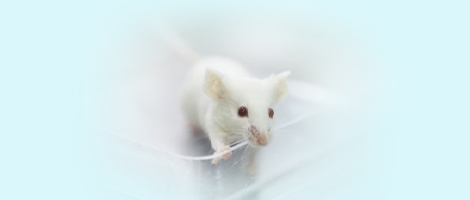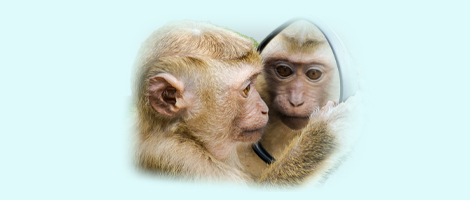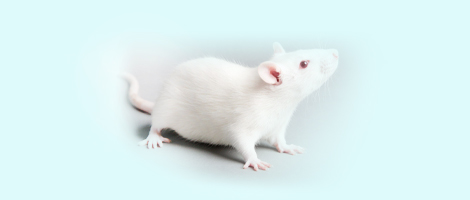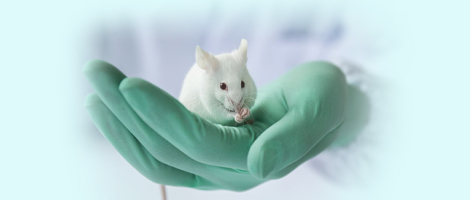| 1 |
STABELL A C, MEYERSON N R, GULLBERG R C, et al. Dengue viruses cleave STING in humans but not in nonhuman primates, their presumed natural reservoir[J]. eLife, 2018, 7: e31919. DOI:10.7554/eLife.31919 .
|
| 2 |
World Health Organization. Dengue-Global situation [EB/OL]. (2024-05-30)[2024-09-27]. https://www.who.int/emergencies/disease-outbreak-news/item/2024-DON518.
|
| 3 |
WILDER-SMITH A. Dengue vaccine development: challenges and prospects[J]. Curr Opin Infect Dis, 2022, 35(5):390-396. DOI:10.1097/QCO.0000000000000871 .
|
| 4 |
MALAVIGE G N, OGG G S. Molecular mechanisms in the pathogenesis of dengue infections[J]. Trends Mol Med, 2024, 30(5):484-498. DOI:10.1016/j.molmed.2024.03.006 .
|
| 5 |
KAYESH M E H, TSUKIYAMA-KOHARA K. Mammalian animal models for dengue virus infection: a recent overview[J]. Arch Virol, 2022, 167(1):31-44. DOI:10.1007/s00705-021-05298-2 .
|
| 6 |
CHIU H C, HANNEMANN H, HEESOM K J, et al. High-throughput quantitative proteomic analysis of dengue virus type 2 infected A549 cells[J]. PLoS One, 2014, 9(3): e93305. DOI:10.1371/journal.pone.0093305 .
|
| 7 |
RIVERA J A, RENGIFO A C, SARMIENTO L, et al. Nuclei ultrastructural changes of C6/36 cells infected with virus dengue type 2[J]. Biomedica, 2018, 38(0):135-143. DOI:10.7705/biomedica.v38i0.3997 .
|
| 8 |
杨佳佳, 姜黎明, 罗佳, 等. 登革病毒感染C6/36、Vero、BHK-21和THP-1细胞CPE的比较及病毒检测[J]. 中国生物制品学杂志, 2017, 30(4):362-365, 371. DOI: 10.13200/j.cnki.cjb.001705 .
|
|
YANG J J, JIANG L M, LUO J, et al. CPE caused by dengue virus in C6/36, Vero, BHK-21 and THP 1 cells and virus test[J]. Chin J Biol, 2017, 30(4):362-365, 371. DOI: 10.13200/j.cnki.cjb.001705 .
|
| 9 |
林垚, 洪珊, 王晓丹, 等. Ⅲ型登革病毒在C6/36及Vero细胞中复制对其毒力的影响[J]. 中国生物制品学杂志, 2019, 32(10):1070-1073, 1079. DOI: 10.13200/j.cnki.cjb.002826 .
|
|
LIN Y, HONG S, WANG X D, et al. Effect of replication of dengue virus type Ⅲ in C6/36 and Vero cells on virulence[J]. Chin J Biol, 2019, 32(10):1070-1073, 1079. DOI: 10.13200/j.cnki.cjb.002826 .
|
| 10 |
LEE H C, YEN Y T, CHEN W Y, et al. Dengue type 4 live-attenuated vaccine viruses passaged in vero cells affect genetic stability and dengue-induced hemorrhaging in mice[J]. PLoS One, 2011, 6(10): e25800. DOI:10.1371/journal.pone. 0025800 .
|
| 11 |
EMENY J M, MORGAN M J. Regulation of the interferon system: evidence that vero cells have a genetic defect in interferon production[J]. J Gen Virol, 1979, 43(1):247-252. DOI:10.1099/0022-1317-43-1-247 .
|
| 12 |
ZHAO X P, TANG Z Y, KLUMPP B, et al. Primary hepatocytes of Tupaia belangeri as a potential model for hepatitis C virus infection[J]. J Clin Invest, 2002, 109(2):221-232. DOI:10.1172/JCI13011 .
|
| 13 |
ZHANG L, SHEN Z L, FENG Y, et al. Infectivity of Zika virus on primary cells support tree shrew as animal model[J]. Emerg Microbes Infect, 2019, 8(1):232-241. DOI:10.1080/22221751. 2018.1559707 .
|
| 14 |
KAYESH M E H, KITAB B, SANADA T, et al. Susceptibility and initial immune response of Tupaia belangeri cells to dengue virus infection[J]. Infect Genet Evol, 2017, 51:203-210. DOI:10.1016/j.meegid.2017.04.003 .
|
| 15 |
丁相荣, 陈柳, 霍姝汭, 等. 树鼩角膜基质永生化细胞系的构建及其在病毒感染性方面的研究[J]. 中国实验动物学报, 2024, 32(5):610-619. DOI: 10.3969/j.issn.1005-4847.2024.05.008 .
|
|
DING X R, CHEN L, HUO S R, et al. Construction of immortalized tree shrew corneal stromal cell line and investigation of viral infectivity[J]. Acta Lab Anim Sci Sin, 2024, 32(5):610-619. DOI: 10.3969/j.issn.1005-4847.2024.05.008 .
|
| 16 |
GUZMAN M G, GUBLER D J, IZQUIERDO A, et al. Dengue infection[J]. Nat Rev Dis Primers, 2016, 2:16055. DOI:10.1038/nrdp.2016.55 .
|
| 17 |
HUITS R, ANGELO K M, AMATYA B, et al. Clinical characteristics and outcomes among travelers with severe dengue: a GeoSentinel analysis[J]. Ann Intern Med, 2023, 176(7):940-948. DOI:10.7326/M23-0721 .
|
| 18 |
孙爱娟. 登革1型病毒和登革2型病毒在C6/36细胞及白纹伊蚊体内共感染的研究[D]. 合肥: 安徽医科大学, 2018.
|
|
SUN A J. Research on co-infection of DENV-1 and DENV-2 in C6/36 cells and Aedes albopictus[D]. Hefei: Anhui Medical University, 2018.
|
| 19 |
HARAPAN H, MICHIE A, SASMONO R T, et al. Dengue: a minireview[J]. Viruses, 2020, 12(8): E829. DOI:10.3390/v12080829 .
|
| 20 |
国家卫生健康委办公厅, 国家中医药局综合司. 关于印发麻疹等传染病诊疗方案(2024年版)的通知[EB/OL]. (2024-07-19)[2024-10-14]. https://www.gov.cn/zhengce/zhengceku/202407/content_6965110.htm.
|
|
General Office of the National Health Commission, Comprehensive Departmentof the National Administration of Traditional Chinese Medicine. Notice on issuing the diagnosis and treatment protocols for measles and other infectious diseases (2024 edition) [EB/OL]. (2024-07-19) [2024-10-14]. https://www.gov.cn/zhengce/zhengceku/202407/content_6965110.htm.
|
| 21 |
PANG X J, ZHANG R D, CHENG G. Progress towards understanding the pathogenesis of dengue hemorrhagic fever[J]. Virol Sin, 2017, 32(1):16-22. DOI:10.1007/s12250-016-3855-9 .
|
| 22 |
SHARP T M, ANDERSON K B, KATZELNICK L C, et al. Knowledge gaps in the epidemiology of severe dengue impede vaccine evaluation[J]. Lancet Infect Dis, 2022, 22(2): e42-e51. DOI:10.1016/S1473-3099(20)30871-9 .
|
| 23 |
VIJAYAKRISHNAN S, JIU Y M, HARRIS J R. Virus infected cells (subcellular biochemistry book 106)[M]. Berlin: Springer, 2023:197-210.
|
| 24 |
KNEZEVIC I, STACEY G, PETRICCIANI J, et al. Evaluation of cell substrates for the production of biologicals: Revision of WHO recommendations. Report of the WHO Study Group on Cell Substrates for the Production of Biologicals, 22-23 April 2009, Bethesda, USA[J]. Biologicals, 2010, 38(1):162-169. DOI:10.1016/j.biologicals.2009.08.019 .
|
| 25 |
程尧, 程小玲, 申瑷琳, 等. 人用疫苗生产用细胞基质使用现状及研究进展[J]. 国际生物制品学杂志, 2023, 46(5):235-239. DOI: 10.3760/cma.j.cn311962-20221108-00078 .
|
|
CHENG Y, CHENG X L, SHEN A L, et al. Current status and research progress of cell substrate for human vaccine production[J]. Int J Biol, 2023, 46(5):235-239. DOI: 10.3760/cma.j.cn311962-20221108-00078 .
|
| 26 |
AUBRIT F, PERUGI F, LÉON A, et al. Cell substrates for the production of viral vaccines[J]. Vaccine, 2015, 33(44):5905-5912. DOI:10.1016/j.vaccine.2015.06.110 .
|
| 27 |
李爱灵, 王红燕, 张月兰, 等. Vero细胞传代过程中致瘤性的检测[J]. 中华微生物学和免疫学杂志, 2011, 31(5):456-461. DOI: 10.3760/cma.j.issn.0254-5101.2011.05.017 .
|
|
LI A L, WANG H Y, ZHANG Y L, et al. Experimental investigation on tumorigenicity of Vero cell in the process of passage[J]. Chin J Microbiol Immunol, 2011, 31(5):456-461. DOI: 10.3760/cma.j.issn.0254-5101.2011.05.017 .
|
| 28 |
BELOUKAS A. Dengue: Another viral infection with mucocutaneous manifestations[J]. J Eur Acad Dermatol Venereol, 2024, 38(1):15-16. DOI:10.1111/jdv.19589 .
|
| 29 |
WEI K C, WEI W J, LIU Y S, et al. Assessment of prolonged dengue virus infection in dermal fibroblasts and hair-follicle dermal papilla cells[J]. Viruses, 2020, 12(3):267. DOI:10.3390/v12030267 .
|
| 30 |
PAGLIARI C, QUARESMA J S, DOS-SANTOS W C, et al. Mechanisms of programmed cell death associated to severe dengue in human renal lesions[J]. Microb Pathog, 2024, 194:106794. DOI:10.1016/j.micpath.2024.106794 .
|
| 31 |
THONGTAN T, PANYIM S, SMITH D R. Apoptosis in dengue virus infected liver cell lines HepG2 and Hep3B[J]. J Med Virol, 2004, 72(3):436-444. DOI:10.1002/jmv.20004 .
|
| 32 |
DIELIS A W, SHADID S. A 66-year old woman with large vessel vasculitis after a dengue virus infection[J]. Brit J Diab Vasc Dis, 2013, 13(1):56-57. DOI:10.1177/1474651412475099 .
|
| 33 |
ARIAS-ARIAS J L, VEGA-AGUILAR F, CORRALES-AGUILAR E, et al. Dengue virus infection of primary human smooth muscle cells[J]. Am J Trop Med Hyg, 2018, 99(6):1451-1457. DOI:10.4269/ajtmh.18-0175 .
|
| 34 |
周旋. 登革3型病毒感染人脑微血管内皮细胞的机制研究[D]. 广州: 南方医科大学, 2014.
|
|
ZHOU X. Mechanism study of dengue virus type 3 infecting the human brain microvascular endothelial cells[D]. Guangzhou: Southern Medical University, 2014.
|
| 35 |
LUCENA-NETO F D, FALCÃO L F M, MORAES E C D S, et al. Dengue fever ophthalmic manifestations: a review and update[J]. Rev Med Virol, 2023, 33(2): e2422. DOI:10.1002/rmv.2422 .
|
| 36 |
NG A W, TEOH S C. Dengue eye disease[J]. Surv Ophthalmol, 2015, 60(2):106-114. DOI:10.1016/j.survophthal.2014.07.003 .
|







 ), 陆彩霞1(
), 陆彩霞1( )(
)( )
)
 ), LU Caixia1(
), LU Caixia1( )(
)( )
)